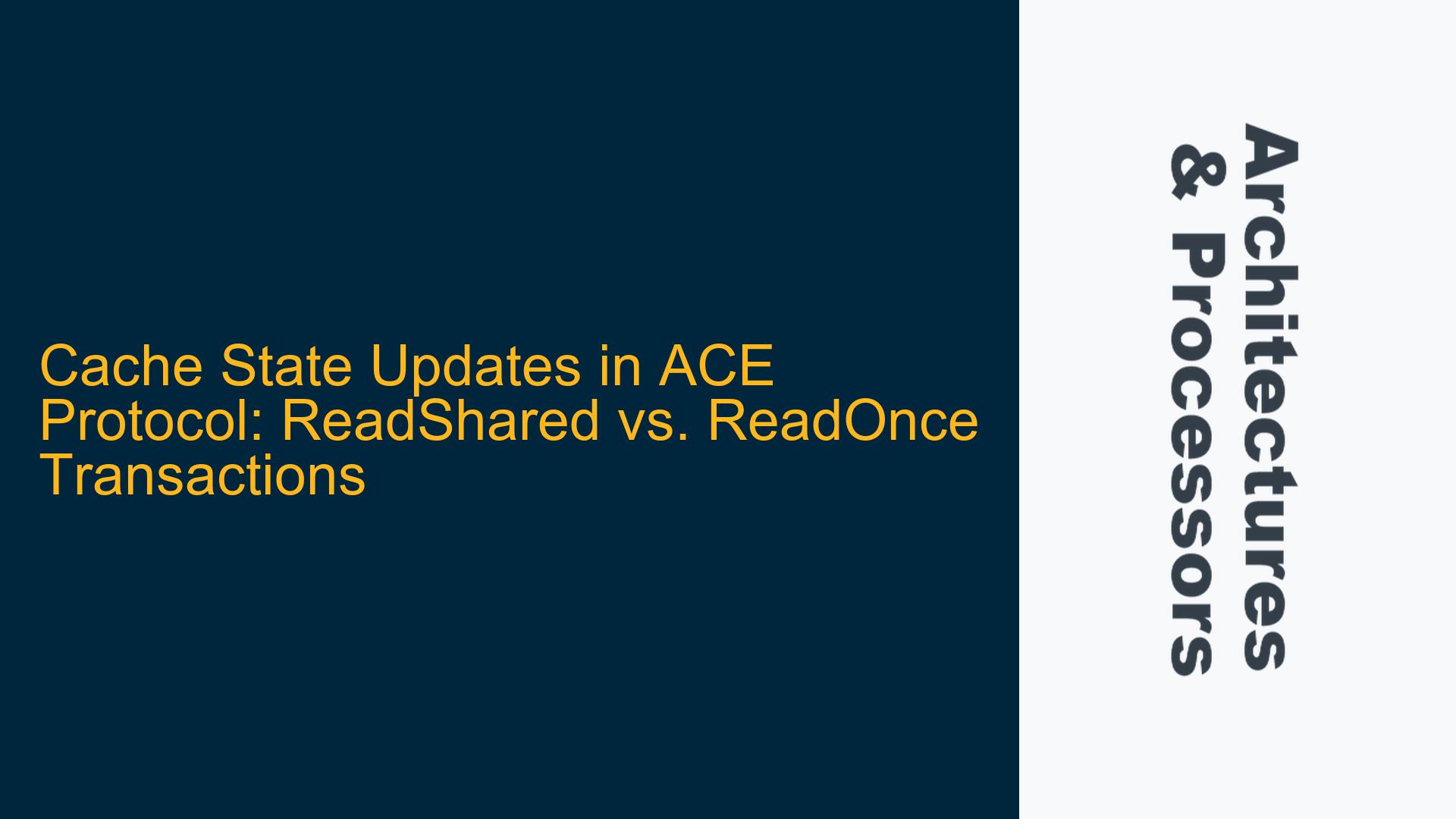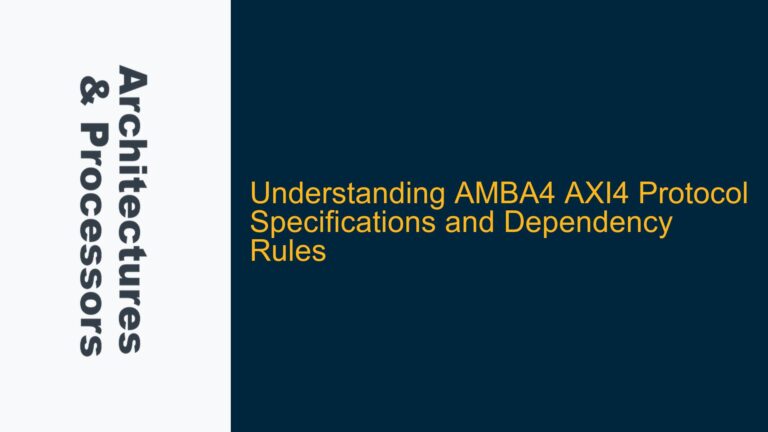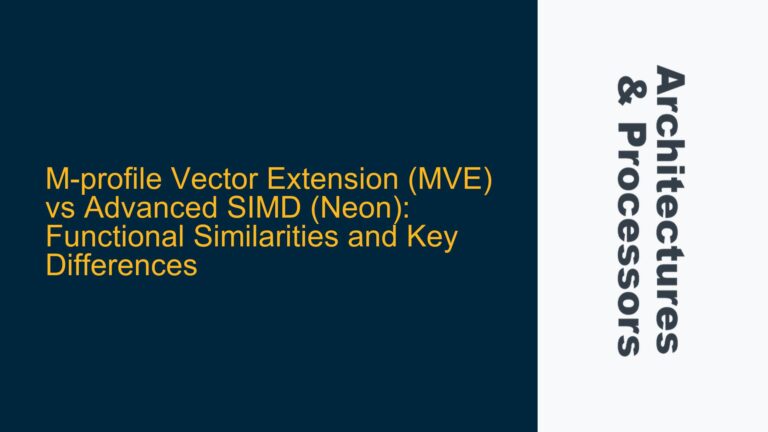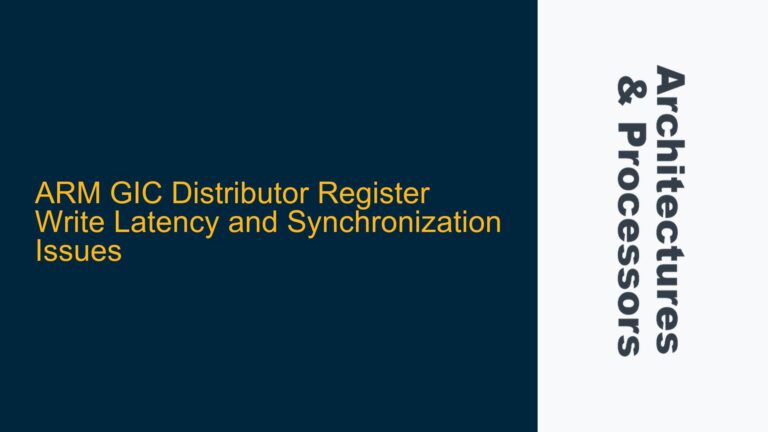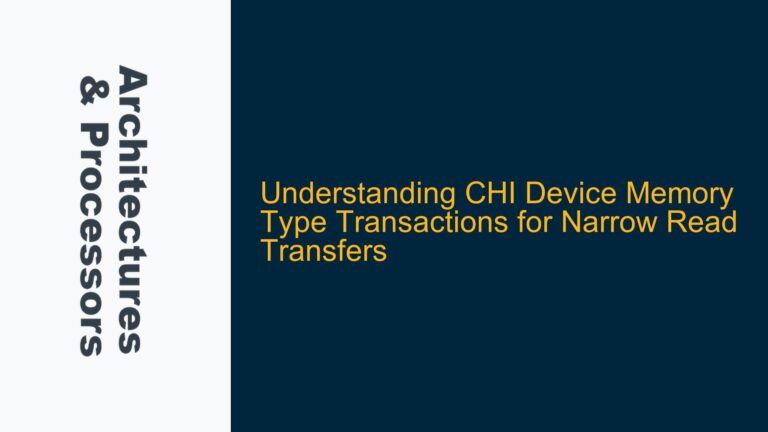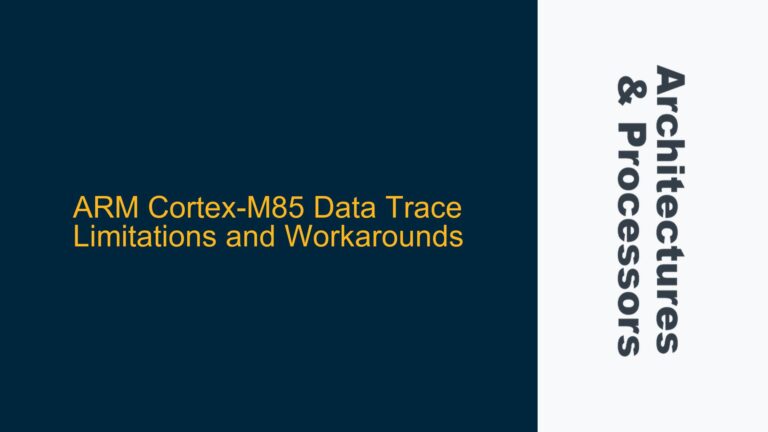Cache State Behavior in ACE Protocol for ReadShared and ReadOnce Transactions
The ARM ACE (AXI Coherency Extensions) protocol defines a set of rules and mechanisms to ensure cache coherency in multi-core systems. Two critical transaction types in ACE are ReadShared and ReadOnce, which have distinct implications for cache state updates. Understanding how these transactions interact with the cache state is essential for designing and verifying ARM-based SoCs, particularly when dealing with snooped managers.
In the ACE protocol, a snooped manager is responsible for maintaining cache coherency by responding to snoop requests from other managers or observers. When a ReadShared or ReadOnce transaction is issued, the cache state of the target data must be updated according to the protocol’s rules. These updates depend on the current state of the cache line, the type of transaction, and the snoop response from other managers.
The cache state transitions for ReadShared and ReadOnce transactions are documented in the ARM Technical Reference Manual (TRM) in tables D5-2, D5-7, and D5-8. These tables outline the permissible state transitions and the conditions under which they occur. However, the actual implementation of these transitions is left to the specific manager, making it crucial to understand the underlying principles and potential pitfalls.
Snoop Response Handling and Implementation-Defined Behavior
When a snooped manager receives a snoop request, it must decide how to handle the request based on the current cache state and the type of transaction being processed. For ReadShared transactions, the manager typically ensures that the cache line is in a shared state, allowing multiple managers to access the data concurrently. For ReadOnce transactions, the manager may choose to invalidate the cache line after the transaction completes, as ReadOnce implies a single access with no intention of retaining the data in the cache.
The handling of snoop requests is implementation-defined, meaning that the specific behavior can vary between different managers. This variability introduces challenges in both design and verification, as the system must account for all possible valid implementations while ensuring compliance with the ACE protocol.
One common issue arises when a manager incorrectly updates the cache state during a ReadShared transaction, leading to coherency violations. For example, if a manager fails to transition a cache line from the Exclusive state to the Shared state, other managers may not be aware of the shared access, resulting in data inconsistencies. Similarly, during a ReadOnce transaction, improper handling of the snoop response can cause premature invalidation or retention of the cache line, violating the protocol’s intent.
Strategies for Ensuring Correct Cache State Updates
To ensure correct cache state updates for ReadShared and ReadOnce transactions, designers and verification engineers must adopt a systematic approach. This approach involves analyzing the cache state transitions defined in the ARM TRM, implementing robust snoop response logic, and verifying the behavior under various scenarios.
First, designers must carefully review tables D5-2, D5-7, and D5-8 in the ARM TRM to understand the permissible state transitions for each transaction type. These tables provide a foundation for implementing the cache state update logic in the snooped manager. For example, during a ReadShared transaction, the manager must ensure that the cache line transitions to the Shared state if it is currently in the Exclusive or Modified state. Similarly, during a ReadOnce transaction, the manager must invalidate the cache line after the transaction completes, unless the snoop response indicates that the line is still required.
Second, designers must implement snoop response logic that adheres to the ACE protocol’s requirements. This logic must account for the current cache state, the type of transaction, and the snoop response from other managers. For example, if a manager receives a snoop request for a ReadShared transaction and the cache line is in the Exclusive state, the manager must transition the line to the Shared state and provide the data to the requester. If the cache line is already in the Shared state, the manager may simply acknowledge the snoop request without modifying the cache state.
Third, verification engineers must develop comprehensive test cases to validate the cache state update logic. These test cases should cover all possible combinations of cache states, transaction types, and snoop responses. For example, a test case might involve a ReadShared transaction targeting a cache line in the Exclusive state, followed by a ReadOnce transaction targeting the same line. The test case should verify that the cache state transitions correctly and that the data remains consistent throughout the process.
In addition to functional verification, performance analysis is critical to ensure that the cache state update logic does not introduce unnecessary latency or resource contention. For example, frequent transitions between the Exclusive and Shared states during ReadShared transactions can degrade system performance, particularly in high-bandwidth applications. Designers must optimize the cache state update logic to minimize these transitions while maintaining protocol compliance.
Finally, designers and verification engineers must collaborate to address any implementation-defined behavior in the snooped manager. This collaboration involves documenting the specific choices made during implementation and ensuring that these choices are consistent with the system’s overall design goals. For example, if a manager chooses to retain a cache line in the Shared state after a ReadOnce transaction, this behavior must be clearly documented and justified based on the system’s performance requirements.
By following these strategies, designers and verification engineers can ensure that cache state updates for ReadShared and ReadOnce transactions are handled correctly in ACE-based systems. This approach not only prevents coherency violations but also optimizes system performance and resource utilization.
Detailed Analysis of Cache State Transitions for ReadShared and ReadOnce Transactions
To provide a deeper understanding of cache state updates in the ACE protocol, let us examine the specific state transitions for ReadShared and ReadOnce transactions. These transitions are governed by the rules outlined in tables D5-2, D5-7, and D5-8 of the ARM TRM.
ReadShared Transactions
A ReadShared transaction is used when a manager intends to read data that may be shared with other managers. The cache state transitions for a ReadShared transaction depend on the current state of the cache line and the snoop response from other managers.
-
Exclusive to Shared Transition: If the cache line is in the Exclusive state, the manager must transition it to the Shared state upon receiving a ReadShared transaction. This transition ensures that other managers can access the data concurrently. The manager must also provide the data to the requester and update the cache line’s state in the directory.
-
Modified to Shared Transition: If the cache line is in the Modified state, the manager must write back the modified data to memory before transitioning to the Shared state. This write-back operation ensures that the most recent data is available to other managers. The manager must then provide the data to the requester and update the cache line’s state in the directory.
-
Shared State Retention: If the cache line is already in the Shared state, the manager may simply acknowledge the ReadShared transaction without modifying the cache state. This behavior minimizes unnecessary state transitions and reduces system overhead.
ReadOnce Transactions
A ReadOnce transaction is used when a manager intends to read data without retaining it in the cache. The cache state transitions for a ReadOnce transaction depend on the current state of the cache line and the snoop response from other managers.
-
Exclusive to Invalid Transition: If the cache line is in the Exclusive state, the manager must invalidate it after completing the ReadOnce transaction. This invalidation ensures that the cache line is not retained unnecessarily, freeing up cache resources for other data.
-
Modified to Invalid Transition: If the cache line is in the Modified state, the manager must write back the modified data to memory before invalidating the cache line. This write-back operation ensures that the most recent data is preserved in memory, even though the cache line is no longer needed.
-
Shared to Invalid Transition: If the cache line is in the Shared state, the manager may choose to invalidate it after completing the ReadOnce transaction. However, this decision depends on the snoop response from other managers. If other managers indicate that the cache line is still required, the manager may retain it in the Shared state to avoid unnecessary invalidation.
Implementation Considerations
The implementation of cache state transitions for ReadShared and ReadOnce transactions must account for several factors, including system performance, resource utilization, and protocol compliance. Designers must carefully balance these factors to ensure optimal system behavior.
-
Performance Optimization: Frequent state transitions can degrade system performance, particularly in high-bandwidth applications. Designers must minimize unnecessary transitions by retaining cache lines in the Shared state when possible and avoiding premature invalidation during ReadOnce transactions.
-
Resource Utilization: Cache resources are limited, and improper state transitions can lead to inefficient resource utilization. For example, retaining cache lines in the Shared state after ReadOnce transactions can reduce the available cache capacity for other data. Designers must implement policies that prioritize critical data and evict less important data when necessary.
-
Protocol Compliance: The ACE protocol defines strict rules for cache state transitions, and non-compliance can lead to coherency violations. Designers must ensure that their implementations adhere to these rules, even when optimizing for performance or resource utilization.
Verification Strategies
Verifying the correct behavior of cache state transitions for ReadShared and ReadOnce transactions requires a comprehensive approach that covers all possible scenarios. Verification engineers must develop test cases that target each state transition and validate the system’s behavior under various conditions.
-
State Transition Coverage: Test cases must cover all permissible state transitions for ReadShared and ReadOnce transactions, including transitions from the Exclusive, Modified, and Shared states. These test cases should verify that the cache state is updated correctly and that the data remains consistent throughout the process.
-
Snoop Response Handling: Test cases must also validate the system’s handling of snoop responses during ReadShared and ReadOnce transactions. These test cases should simulate various snoop response scenarios, including cases where other managers indicate that the cache line is still required or no longer needed.
-
Performance Analysis: In addition to functional verification, test cases should analyze the system’s performance during cache state transitions. These test cases should measure the latency and resource utilization associated with each transition and identify any bottlenecks or inefficiencies.
By following these strategies, designers and verification engineers can ensure that cache state updates for ReadShared and ReadOnce transactions are handled correctly in ACE-based systems. This approach not only prevents coherency violations but also optimizes system performance and resource utilization.
